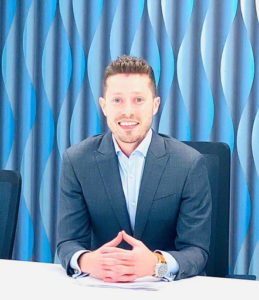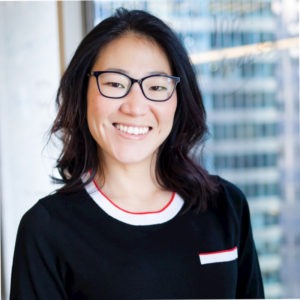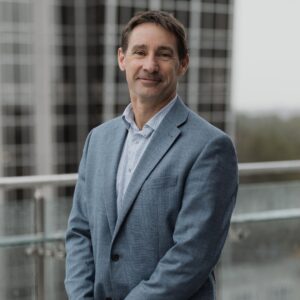ELDERtech: Promoting Intergenerational Understanding
| BY ROBERT W. CHRISTENSEN AND STEPHEN M. SOREFF, MD |
| ELDERtech: Promoting intergenerational understanding Residents and teens explore the future and the past together |
| Nursing home residents often face the problem of isolation along with issues of untapped creativity and a desire to relate their life stories. They often do not have much contact with their families. All too frequently, their children and their grandchildren live far away and rarely make visits. Moreover, the residents’ living situations provide few opportunities to interact with young people, and youngsters are more than often reluctant to come to such facilities. Nursing home residents have immense creative talents that are not always utilized, and they have wonderful stories to tell that, for the most part, go untold. The computer, the Internet, and e-mail can offer solutions to many of these problems. This article chronicles the unique partnership that Pierce Memorial Baptist Home in Brooklyn, Connecticut, has with local high schools in operating its ELDERtech program. Their story shows how teenage students are mentoring residents in computer skills and how, in turn, residents are teaching students about life. The ELDERtech Program Pierce Memorial Baptist Home, an 82-bed long-term care facility, was founded in 1950 when Amasa and Edna Pierce donated their family homestead to the American Baptist Churches of Connecticut to begin “a retirement home for elderly Baptist women.” Today, it is home to both men and women from many different faith backgrounds. Six years ago, a retirement village was added, providing a continuum of services for the elderly from independent living through skilled nursing care. In developing the ELDERtech program, Pierce Home drew on ideas from several resources. In their paper “Usable Computers for the Elderly: Applying Coaching Experiences,” Laurie Kantner and Stephanie Rosenbaum note dexterity, vision, and memory as the most significant challenges to teaching seniors how to use the computer and list ways to counter these problems. Phil Shapiro’s article “Computers Use and the Elderly” states that the Internet counters isolation by promoting a connection to the outside world. With regard to teens teaching nursing home residents, Pierce Home learned from the experiences of others. One of these was a program developed by the USDA Cooperative State Research, Education and Extension Service; the Health Care Financing Administration; and local 4-H Youth Technology Team leaders around the country. The lessons learned from these sources are that the benefits to seniors in learning computer skills include socialization, learning new skills, researching special interests, staying informed of current events, managing personal finances, developing online companionship, shopping, keeping in touch with family and friends, and assisting the homebound or disabled. The Beaumont Foundation of America donated $18,600 worth of computer equipment to begin the ELDERtech program. Teen mentors come from local high schools, including Killingly High School and Woodstock Academy. The response from the local schools was heartening. Walter Signora, head guidance counselor at Killingly High School, says that he was delighted to have his students participate in ELDERtech, as it fits nicely into the school’s new community service program. Al Cormier, chair of the guidance counseling department at Woodstock Academy, says, “Our students value community service, and this program with Pierce Home residents, supervised by administrators and staff, extends the service activities from which our students benefit.” |
According to a March 2004 Pew Internet & American Life Project report, “Older Americans and the Internet,” 22% of Americans aged 65 and older use the Internet; this translates to about eight million people. The report further notes that the percentage of seniors who go online jumped by 47% between 2000 and 2004. Millions of people in their 60s and beyond have found that computers are not only useful for daily activities, from letter writing to games, but also for being in touch with their families. A quick Internet search reveals a growing number of senior Web sites providing information, links, and adventures. Perhaps the standard-bearer Web site about seniors and computers is SeniorNet (www.seniornet.com). It contains discussion and chat areas, learning centers and course information, and living archives, among many other features. A recent homepage, for instance, lauded a SeniorNet-tested IBM Web Adaptation Technology software for those with visual or motor limitations that is free to SeniorNet members. Other Web pages that contain information about senior living issues are the federal government’s Health and Human Services site (www.hhs.gov), and the Administration on Aging site (www.aoa.gov). Other sites are dedicated to teaching seniors how to use the computer and Internet. For example, the Computers Made Easy (for Senior Citizens) site (www.csuchico.edu/~csu/seniors/computing2.html) says, “We are a non-profit Web site designed to help retired folks understand how computers work and locate some resources for improving their computing skills.” Another successful program is CyberSeniors.org (www.cyberseniors.org), probably the oldest organization whose mission is to teach seniors how to use the computer. It has learning centers throughout the United States and has even developed its own curriculum guide. While senior citizens in general have found the computer and Internet to be useful, so have nursing home residents. The advantages and advances that the computer and Internet have to offer are gaining more widespread acceptance and application by nursing facilities and nursing home residents. As an example, Computers For Seniors (www.seniorlove.org), based in Fargo, North Dakota, began with nursing home residents learning to send and receive e-mails. It quickly blossomed to residents playing games, doing artwork, and finding a vast number of activities, both locally and internationally. -Robert W. Christensen and Stephen M. Soreff, MD |
| Selecting and Training Student Mentors Potential participants were screened to ascertain their suitability to working with seniors. The screening consisted of a written survey with questions such as, “Are you close to your grandfather or grandmother? Please explain your answer.” This was followed by individual interviews conducted by the residents themselves. From an initial pool of more than 60 high school students, 30 emerged as potential mentors. The teenagers were then trained on two levels by Pierce Home’s professional staff. First, they were taught how to best work with the elderly by the directors of social services, volunteer services, and recreational therapy. “Some residents are hard of hearing, so talk clearly and slowly,” the students were told. “Remember, these are older people. Their brains don’t work as fast as yours. Be patient. The rewards will be great as you get to know your elderly student.” Second, the teens met with the home’s IT specialist to learn to accommodate the elderly’s special needs in operating the computer. Poor eyesight, arthritis, and memory loss can be barriers to learning how to use the computer. However, with slight adjustments to the computer, these needs can be accommodated. “Put the view screen larger. Slow the mouse click down,” they were told. The professional staff informed the teenagers that they are always available should there be any questions or concerns. Since the program is for the elderly, further accommodations were made. For instance, a special armature was attached to one of the computer stations so seniors in wheelchairs could easily work with the mouse and keyboard. Chairs of the correct height were located so that shorter and frailer people could reach the keyboard and see the monitors. Fortunately, the Beaumont Foundation donated laptop computers. When stationary, the laptop serves as a personal computer unit. The portable laptops can be brought to a resident who may be immobile and unable to come to the computer room. Implementation and Accommodations While the Beaumont Foundation donated the computer equipment, they did not donate funds to implement and operate the program. So, Pierce Home is searching out supplemental funds from individuals and local foundations for such things as staff time for training teenagers, overseeing the program, and setting up the computer lab, as well as monthly fees for Internet use and costs related to disseminating information to other senior care facilities so that they can replicate the program. Results Staff members identified 63 residents who they felt could participate in the program. Family members were then notified and asked for their e-mail addresses. One of the first e-mails that came back to the staff was from a resident’s nephew in Argentina. The response was instantaneous and the nephew said that his 91-year-old uncle would be a perfect candidate for the program. “He has a good mind, and is eager to learn new things,” said the nephew. The program’s expectations are that residents will be taught how to use the computer and Internet and how to complete tasks. They will use e-mail, type and print documents, look for information, and play online games. They will produce newsletters, living histories, memoirs, original writing, and biographies. The program’s end goal is to publish a collection of original writings and biographies. In cases where a resident is so immobile that he or she cannot use the computer, the teen mentor will take down the resident’s “writings” and enter the information in the computer for them. Conclusions So, still in its infancy, the ELDERtech program has proven to be a success on a variety of levels. Residents have found many doors open to them through the computer and the Internet. They can tell their stories. They are in contact with their families. And the entire experience has been greatly enhanced with the addition of teen mentors. Each learns from the other and, in the process, intergenerational understanding is achieved. Robert W. Christensen is former Director of Development & Communications at the Pierce Memorial Baptist Home in Brooklyn, Conn. He is currently Director of Development at Saint Antoine Community in North Smithfield, R.I. For more information, phone (401) 767-2574, ext. 602. Stephen M. Soreff, MD, is President of Education Initiatives. Education Initiatives is an innovative, experiential, interactive teaching program based in Nottingham, N.H., that deals with a number of mental health issues, including elder aggression, suicide, crisis intervention, personal growth, team building, and life transitions, as well as stress and time management. To send your comments to the authors and editors, please e-mail christensen1206@nursinghomesmagazine.com. |
I Advance Senior Care is the industry-leading source for practical, in-depth, business-building, and resident care information for owners, executives, administrators, and directors of nursing at assisted living communities, skilled nursing facilities, post-acute facilities, and continuing care retirement communities. The I Advance Senior Care editorial team and industry experts provide market analysis, strategic direction, policy commentary, clinical best-practices, business management, and technology breakthroughs.
I Advance Senior Care is part of the Institute for the Advancement of Senior Care and published by Plain-English Health Care.
Related Articles
Topics: Activities , Articles , Technology & IT











